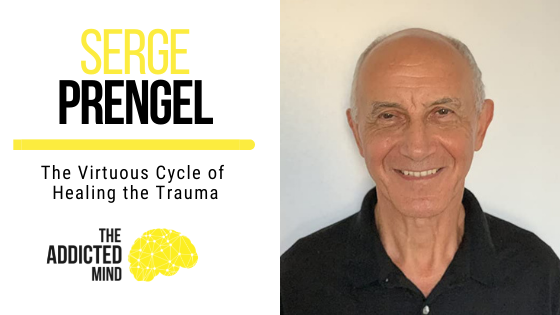How do you develop the tools to attain recovery?
Serge Prengel, the author of The Proactive Twelve Steps for Mindful Recovery, believes that while everyone is different, change will start to manifest itself through the power of a mindful pause.
He also introduces this concept of the virtuous cycle, in which being more connected to ourselves leads to healing, and at the same time, the healing enables us to be more connected to ourselves.
And that’s how we hit that virtuous cycle of trauma healing. It creates a positive feedback loop in our lives so we can make the strategic changes and create a meaningful life that feels good and is purposeful.
On the contrary, the vicious cycle is that progressive cycle of disconnection.
Building the Tools for Trauma Healing
We’re different people when different parts of the nervous system are in gear. And so, you cannot build the tools when you’re activated such as when you’re in sympathetic mode, ventral vagal, or dorsal vagal. You can only access them in moments of trauma if you have practiced your skills. Otherwise, you cannot invent them at that moment.
Therefore, you have to realize where you are and to get the tools at the time when you can use them and practice them, instead of finding yourself, time and again, in a situation when you’re overwhelmed, and it just confirms and strengthens your trauma.
The Felt Sense Experience and the Power of Mindful Pause
The felt sense experience functions as a guide that helps you navigate the path so you have a sense of the direction you’re going. A lot of this process is about paying attention to mindful pause and developing the capacity to have a felt sense that tells you where you are. The felt sense is something that then becomes your ally in terms of what to do.
As you develop the ability of the felt sense, you will have this sense of “it feels right.” It’s not in the sense that you’re disconnected from reality, but feeling right resulting from reality. And so, healing the trauma allows us to follow that felt sense that’s connected to reality.
Moreover, the mindful pause becomes the DNA of the process because it’s something that gives you the ability to, first, tolerate, and then accept a very difficult experience.
The mindful pause is not something like pausing a video, but it’s something wherein you engage your curiosity. You start to deconstruct the structure of what happens to you in life then you start to see patterns, not just situations, where you behave badly and be able to correct it.
If you want to learn more about the virtuous cycle of healing the trauma, check out Episode 167: The Virtuous Cycle of Healing the Trauma with Serge Prengel.

